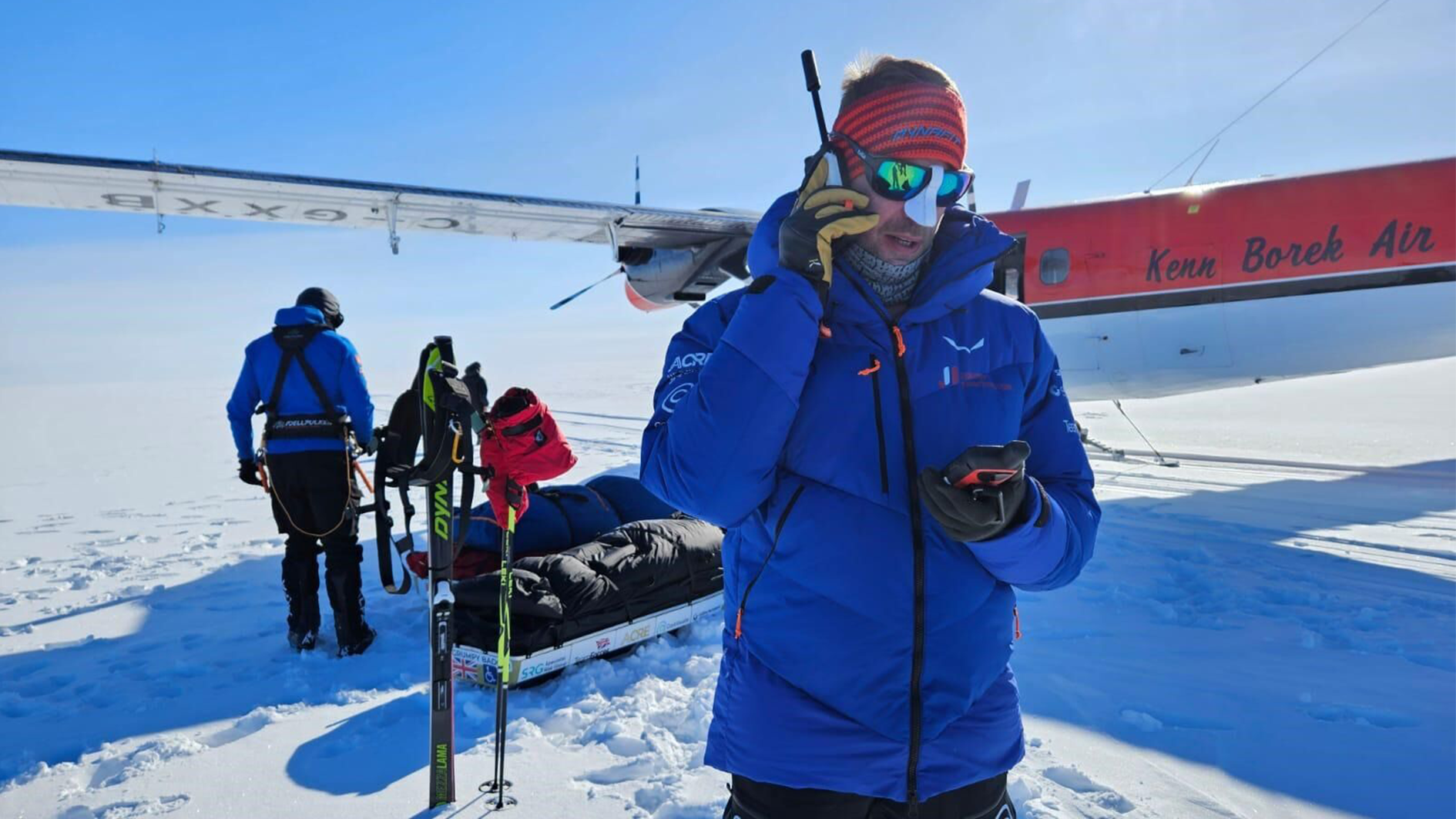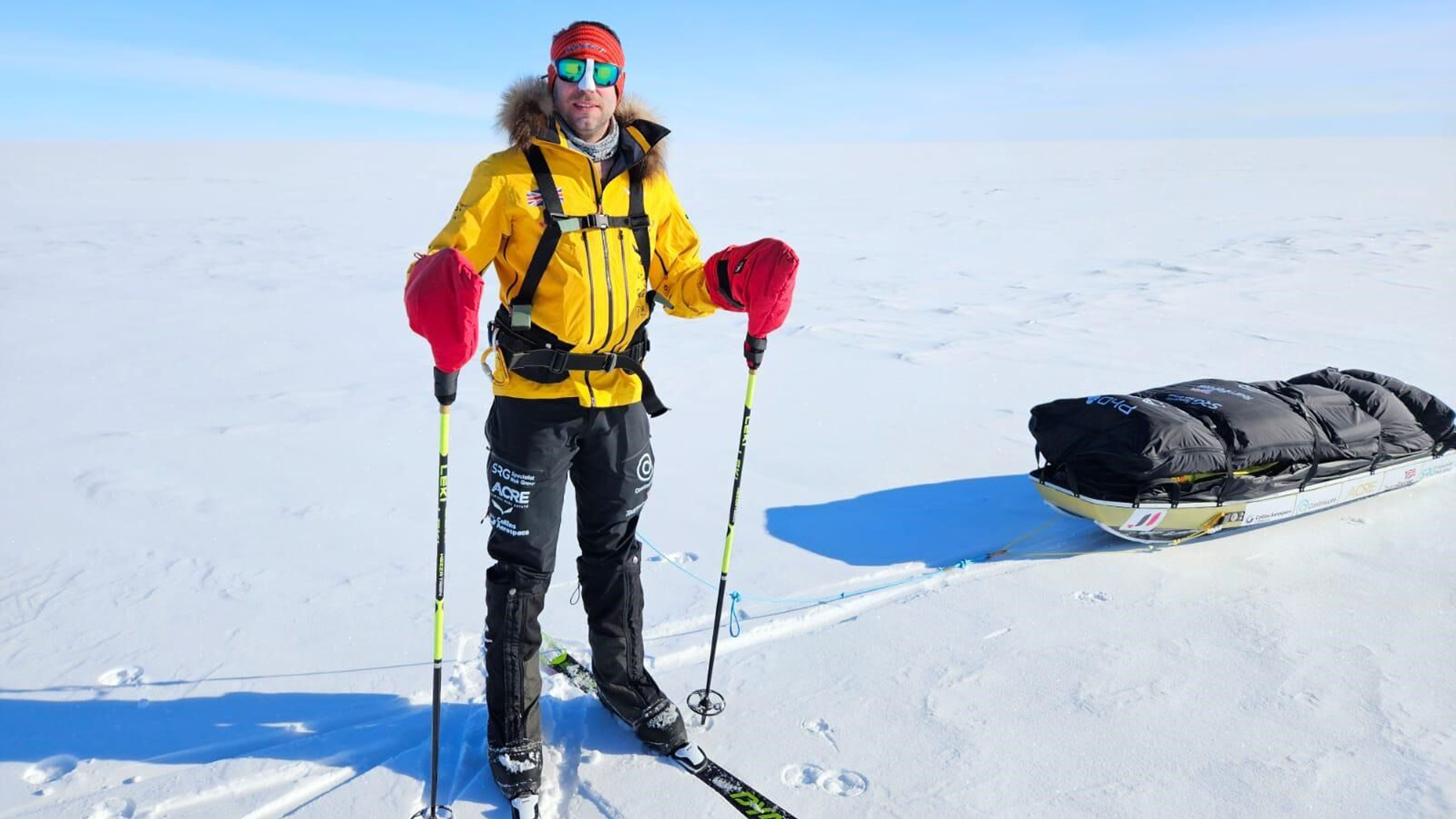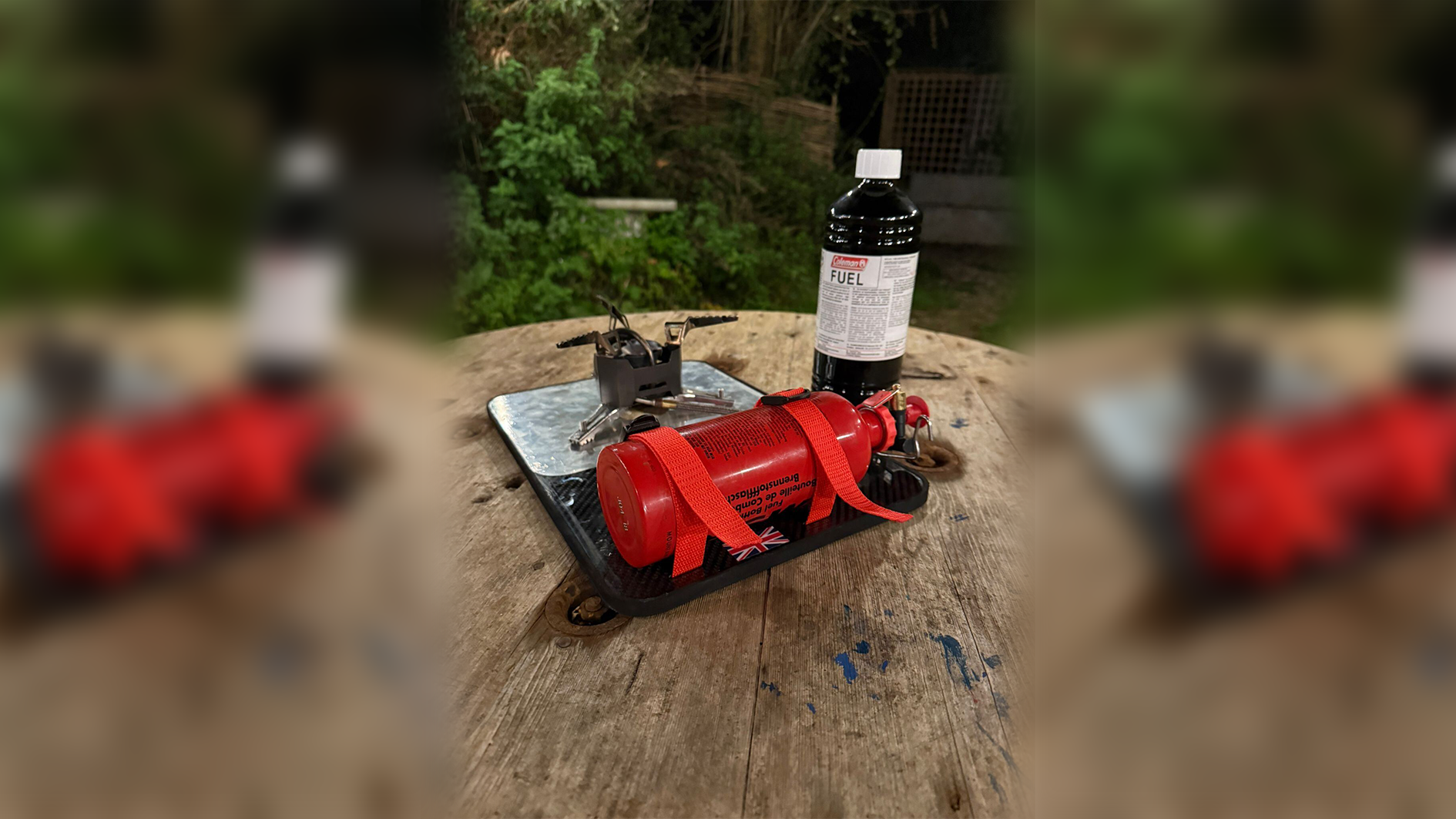
Wondering what gear to take on a chilly winter camp? Have a look at what British para-athlete Jonny Huntington is using right now as he traverses the South Pole.
After a stroke at the age of 28 left him with lifelong mental and physical injuries, the former soldier turned to the outdoors, taking on extreme challenges in aid of charity.
In Antarctica at this very moment, he’s attempting to become the first disabled person to ski the South Pole unassisted, trekking around 14 miles / 22.5km per day in bone-chilling temperatures below -40°F / -40°C.
Before he left, I was lucky enough to catch up with Jonny, who gave me the rundown on all the gear and accessories he’s using along the way.
Tent
Camping in Antarctica is a daunting task. Inhospitable temperatures coupled with often violent winds and a complete lack of natural shelter mean a good tent is an absolute necessity.
Jonny's camping in Hilleberg’s Nammatj 2GT tent. Beating back the elements with tough Kerlon 1800 outer tent fabric and insulating outer tent walls, the Nammatj 2GT was designed for campers and mountaineers alike.
“It’s a fantastic bit of kit,” Jonny says.
In addition to it’s tough exterior, the Namaj 2GT is super lightweight, coming in at just 5.1oz / 2.3kg. This is especially useful for Jonny, who’s lugging his tent along with all his equipment in a sled behind him.
“You know, super easy to put up, it's absolutely bombproof, a really cracking bit of kit.”
Skis
To travel all 566 miles / 911km from the Ronne Ice Shelf on the edge of Antarctica to the geographic South Pole, Jonny is using the Dynafit Mezzlama Touring Skis.
Made from 100% Paulownia race wood with a tough carbon-fiber outer layer, the Mezzlamas are a lightweight, efficient option for speed skiing.
“It's probably the bottom end of the professional range. It's the type of ski that you would do a longer ski mountaineering race on if you were a very good skier,” Jonny tells me.
“So they are ultra-lightweight. I think they're about 740 grams per ski, you know, which compared to the standard ski for this type of expedition is significantly lighter.
“They are also significantly shorter. But we kind of figured that when you're dragging a 110-kilogram pulk (sled), glide is kind of the least of your worries.”

Clothing
Keeping cozy in the bone-chilling Antarctic cold, Jonny is clothed completely by his sponsors at Dynafit, and their sister brand Salewa. He first wore their kit during a practice expedition in Sweden last winter.
“I must admit I'm incredibly impressed by it,” says Jonny.
“I did 55 nights, dragging up to 70-kilo pulks around Swedish mountain ranges, and the Salewa outers that I was wearing don’t have a scratch on them. They are still in immaculate condition.”
Specializing in backcountry wear, Salewa produces durable hiking and mountaineering equipment for all manner of conditions, including the desolate Antarctic.
“You know, I genuinely have not found fault with their kit at all. Sorry, that's a big plug for my sponsors, I appreciate, but I genuinely have been very impressed with the Salewa kit in particular.”
Custom stove board
Dragging his 242lbs / 110kg of equipment across roughly 14 miles / 22.5km per day in desolate Antarctic conditions, Jonny needs to consume roughly 6,000 calories of food each day to keep on trekking. To cook his meals, the 38-year-old is using a custom-made stove board with an attached gas canister. He’s a big fan.
“I've got a custom stove board. It’s a cool bit of kit. As a kit pest it's f*cking cool,” Jonny explains.
“A local guy who lives near me, who’s a carbon fabricator and tends to work on boats has made me one. You know, it's just awesome. It's super light, it weighs just over 350 grams, so it weighs nothing at all.”
The carbon fiber board features a rubberized bottom to increase grip on the ice, and a heat-sink hole beneath the stove to promote heat flow.

For more on Jonny’s expedition, check out our profile, or see his Instagram for daily audio updates.
- The best winter hiking boots 2024 – keep your feet warm, dry, and protected on the trails with our top choices
- The best four-season tents 2024 – backpacking shelters to protect you all year







